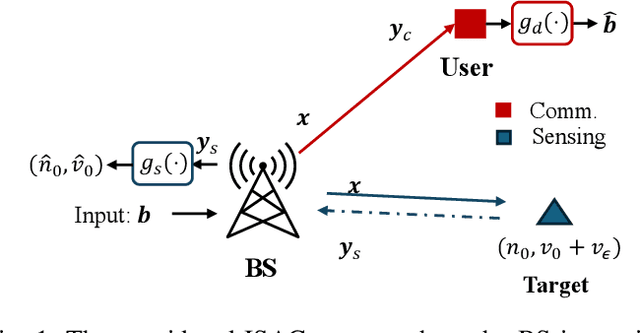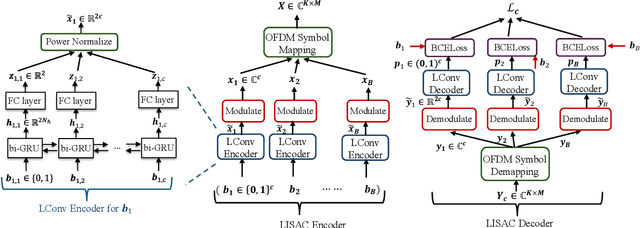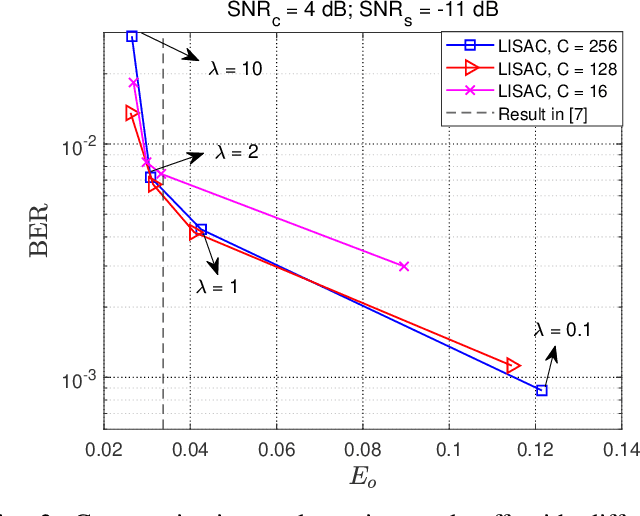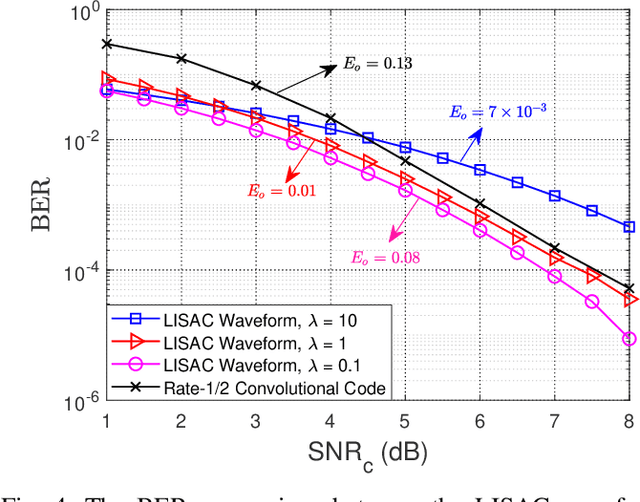Yumeng Zhang
A Foundation Model Framework for Multi-View MRI Classification of Extramural Vascular Invasion and Mesorectal Fascia Invasion in Rectal Cancer
May 23, 2025Abstract:Background: Accurate MRI-based identification of extramural vascular invasion (EVI) and mesorectal fascia invasion (MFI) is pivotal for risk-stratified management of rectal cancer, yet visual assessment is subjective and vulnerable to inter-institutional variability. Purpose: To develop and externally evaluate a multicenter, foundation-model-driven framework that automatically classifies EVI and MFI on axial and sagittal T2-weighted MRI. Methods: This retrospective study used 331 pre-treatment rectal cancer MRI examinations from three European hospitals. After TotalSegmentator-guided rectal patch extraction, a self-supervised frequency-domain harmonization pipeline was trained to minimize scanner-related contrast shifts. Four classifiers were compared: ResNet50, SeResNet, the universal biomedical pretrained transformer (UMedPT) with a lightweight MLP head, and a logistic-regression variant using frozen UMedPT features (UMedPT_LR). Results: UMedPT_LR achieved the best EVI detection when axial and sagittal features were fused (AUC = 0.82; sensitivity = 0.75; F1 score = 0.73), surpassing the Chaimeleon Grand-Challenge winner (AUC = 0.74). The highest MFI performance was attained by UMedPT on axial harmonized images (AUC = 0.77), surpassing the Chaimeleon Grand-Challenge winner (AUC = 0.75). Frequency-domain harmonization improved MFI classification but variably affected EVI performance. Conventional CNNs (ResNet50, SeResNet) underperformed, especially in F1 score and balanced accuracy. Conclusion: These findings demonstrate that combining foundation model features, harmonization, and multi-view fusion significantly enhances diagnostic performance in rectal MRI.
Explainable Anatomy-Guided AI for Prostate MRI: Foundation Models and In Silico Clinical Trials for Virtual Biopsy-based Risk Assessment
May 23, 2025Abstract:We present a fully automated, anatomically guided deep learning pipeline for prostate cancer (PCa) risk stratification using routine MRI. The pipeline integrates three key components: an nnU-Net module for segmenting the prostate gland and its zones on axial T2-weighted MRI; a classification module based on the UMedPT Swin Transformer foundation model, fine-tuned on 3D patches with optional anatomical priors and clinical data; and a VAE-GAN framework for generating counterfactual heatmaps that localize decision-driving image regions. The system was developed using 1,500 PI-CAI cases for segmentation and 617 biparametric MRIs with metadata from the CHAIMELEON challenge for classification (split into 70% training, 10% validation, and 20% testing). Segmentation achieved mean Dice scores of 0.95 (gland), 0.94 (peripheral zone), and 0.92 (transition zone). Incorporating gland priors improved AUC from 0.69 to 0.72, with a three-scale ensemble achieving top performance (AUC = 0.79, composite score = 0.76), outperforming the 2024 CHAIMELEON challenge winners. Counterfactual heatmaps reliably highlighted lesions within segmented regions, enhancing model interpretability. In a prospective multi-center in-silico trial with 20 clinicians, AI assistance increased diagnostic accuracy from 0.72 to 0.77 and Cohen's kappa from 0.43 to 0.53, while reducing review time per case by 40%. These results demonstrate that anatomy-aware foundation models with counterfactual explainability can enable accurate, interpretable, and efficient PCa risk assessment, supporting their potential use as virtual biopsies in clinical practice.
Pixels to Prognosis: Harmonized Multi-Region CT-Radiomics and Foundation-Model Signatures Across Multicentre NSCLC Data
May 23, 2025Abstract:Purpose: To evaluate the impact of harmonization and multi-region CT image feature integration on survival prediction in non-small cell lung cancer (NSCLC) patients, using handcrafted radiomics, pretrained foundation model (FM) features, and clinical data from a multicenter dataset. Methods: We analyzed CT scans and clinical data from 876 NSCLC patients (604 training, 272 test) across five centers. Features were extracted from the whole lung, tumor, mediastinal nodes, coronary arteries, and coronary artery calcium (CAC). Handcrafted radiomics and FM deep features were harmonized using ComBat, reconstruction kernel normalization (RKN), and RKN+ComBat. Regularized Cox models predicted overall survival; performance was assessed using the concordance index (C-index), 5-year time-dependent area under the curve (t-AUC), and hazard ratio (HR). SHapley Additive exPlanations (SHAP) values explained feature contributions. A consensus model used agreement across top region of interest (ROI) models to stratify patient risk. Results: TNM staging showed prognostic utility (C-index = 0.67; HR = 2.70; t-AUC = 0.85). The clinical + tumor radiomics model with ComBat achieved a C-index of 0.7552 and t-AUC of 0.8820. FM features (50-voxel cubes) combined with clinical data yielded the highest performance (C-index = 0.7616; t-AUC = 0.8866). An ensemble of all ROIs and FM features reached a C-index of 0.7142 and t-AUC of 0.7885. The consensus model, covering 78% of valid test cases, achieved a t-AUC of 0.92, sensitivity of 97.6%, and specificity of 66.7%. Conclusion: Harmonization and multi-region feature integration improve survival prediction in multicenter NSCLC data. Combining interpretable radiomics, FM features, and consensus modeling enables robust risk stratification across imaging centers.
DriVerse: Navigation World Model for Driving Simulation via Multimodal Trajectory Prompting and Motion Alignment
Apr 22, 2025



Abstract:This paper presents DriVerse, a generative model for simulating navigation-driven driving scenes from a single image and a future trajectory. Previous autonomous driving world models either directly feed the trajectory or discrete control signals into the generation pipeline, leading to poor alignment between the control inputs and the implicit features of the 2D base generative model, which results in low-fidelity video outputs. Some methods use coarse textual commands or discrete vehicle control signals, which lack the precision to guide fine-grained, trajectory-specific video generation, making them unsuitable for evaluating actual autonomous driving algorithms. DriVerse introduces explicit trajectory guidance in two complementary forms: it tokenizes trajectories into textual prompts using a predefined trend vocabulary for seamless language integration, and converts 3D trajectories into 2D spatial motion priors to enhance control over static content within the driving scene. To better handle dynamic objects, we further introduce a lightweight motion alignment module, which focuses on the inter-frame consistency of dynamic pixels, significantly enhancing the temporal coherence of moving elements over long sequences. With minimal training and no need for additional data, DriVerse outperforms specialized models on future video generation tasks across both the nuScenes and Waymo datasets. The code and models will be released to the public.
Seeing the Future, Perceiving the Future: A Unified Driving World Model for Future Generation and Perception
Mar 17, 2025Abstract:We present UniFuture, a simple yet effective driving world model that seamlessly integrates future scene generation and perception within a single framework. Unlike existing models focusing solely on pixel-level future prediction or geometric reasoning, our approach jointly models future appearance (i.e., RGB image) and geometry (i.e., depth), ensuring coherent predictions. Specifically, during the training, we first introduce a Dual-Latent Sharing scheme, which transfers image and depth sequence in a shared latent space, allowing both modalities to benefit from shared feature learning. Additionally, we propose a Multi-scale Latent Interaction mechanism, which facilitates bidirectional refinement between image and depth features at multiple spatial scales, effectively enhancing geometry consistency and perceptual alignment. During testing, our UniFuture can easily predict high-consistency future image-depth pairs by only using the current image as input. Extensive experiments on the nuScenes dataset demonstrate that UniFuture outperforms specialized models on future generation and perception tasks, highlighting the advantages of a unified, structurally-aware world model. The project page is at https://github.com/dk-liang/UniFuture.
Uplink Rate-Splitting Multiple Access for Mobile Edge Computing with Short-Packet Communications
Feb 07, 2025



Abstract:In this paper, a Rate-Splitting Multiple Access (RSMA) scheme is proposed to assist a Mobile Edge Computing (MEC) system where local computation tasks from two users are offloaded to the MEC server, facilitated by uplink RSMA for processing. The efficiency of the MEC service is hence primarily influenced by the RSMA-aided task offloading phase and the subsequent task computation phase, where reliable and low-latency communication is required. For this practical consideration, short-packet communication in the Finite Blocklength (FBL) regime is introduced. In this context, we propose a novel uplink RSMA-aided MEC framework and derive the overall Successful Computation Probability (SCP) with FBL consideration. To maximize the SCP of our proposed RSMA-aided MEC, we strategically optimize: (1) the task offloading factor which determines the number of tasks to be offloaded and processed by the MEC server; (2) the transmit power allocation between different RSMA streams; and (3) the task-splitting factor which decides how many tasks are allocated to splitting streams, while adhering to FBL constraints. To address the strong coupling between these variables in the SCP expression, we apply the Alternative Optimization method, which formulates tractable subproblems to optimize each variable iteratively. The resultant non-convex subproblems are then tackled by Successive Convex Approximation. Numerical results demonstrate that applying uplink RSMA in the MEC system with FBL constraints can not only improve the SCP performance but also provide lower latency in comparison to conventional transmission scheme such as Non-orthogonal Multiple Access (NOMA).
PAL -- Parallel active learning for machine-learned potentials
Nov 30, 2024



Abstract:Constructing datasets representative of the target domain is essential for training effective machine learning models. Active learning (AL) is a promising method that iteratively extends training data to enhance model performance while minimizing data acquisition costs. However, current AL workflows often require human intervention and lack parallelism, leading to inefficiencies and underutilization of modern computational resources. In this work, we introduce PAL, an automated, modular, and parallel active learning library that integrates AL tasks and manages their execution and communication on shared- and distributed-memory systems using the Message Passing Interface (MPI). PAL provides users with the flexibility to design and customize all components of their active learning scenarios, including machine learning models with uncertainty estimation, oracles for ground truth labeling, and strategies for exploring the target space. We demonstrate that PAL significantly reduces computational overhead and improves scalability, achieving substantial speed-ups through asynchronous parallelization on CPU and GPU hardware. Applications of PAL to several real-world scenarios - including ground-state reactions in biomolecular systems, excited-state dynamics of molecules, simulations of inorganic clusters, and thermo-fluid dynamics - illustrate its effectiveness in accelerating the development of machine learning models. Our results show that PAL enables efficient utilization of high-performance computing resources in active learning workflows, fostering advancements in scientific research and engineering applications.
LISAC: Learned Coded Waveform Design for ISAC with OFDM
Oct 14, 2024



Abstract:We propose a novel deep learning based method to design a coded waveform for integrated sensing and communication (ISAC) system based on orthogonal frequency-division multiplexing (OFDM). Our ultimate goal is to design a coded waveform, which is capable of providing satisfactory sensing performance of the target while maintaining high communication quality measured in terms of the bit error rate (BER). The proposed LISAC provides an improved waveform design with the assistance of deep neural networks for the encoding and decoding of the information bits. In particular, the transmitter, parameterized by a recurrent neural network (RNN), encodes the input bit sequence into the transmitted waveform for both sensing and communications. The receiver employs a RNN-based decoder to decode the information bits while the transmitter senses the target via maximum likelihood detection. We optimize the system considering both the communication and sensing performance. Simulation results show that the proposed LISAC waveform achieves a better trade-off curve compared to existing alternatives.
Parameter-Efficient Fine-Tuning in Spectral Domain for Point Cloud Learning
Oct 10, 2024



Abstract:Recently, leveraging pre-training techniques to enhance point cloud models has become a hot research topic. However, existing approaches typically require full fine-tuning of pre-trained models to achieve satisfied performance on downstream tasks, accompanying storage-intensive and computationally demanding. To address this issue, we propose a novel Parameter-Efficient Fine-Tuning (PEFT) method for point cloud, called PointGST (Point cloud Graph Spectral Tuning). PointGST freezes the pre-trained model and introduces a lightweight, trainable Point Cloud Spectral Adapter (PCSA) to fine-tune parameters in the spectral domain. The core idea is built on two observations: 1) The inner tokens from frozen models might present confusion in the spatial domain; 2) Task-specific intrinsic information is important for transferring the general knowledge to the downstream task. Specifically, PointGST transfers the point tokens from the spatial domain to the spectral domain, effectively de-correlating confusion among tokens via using orthogonal components for separating. Moreover, the generated spectral basis involves intrinsic information about the downstream point clouds, enabling more targeted tuning. As a result, PointGST facilitates the efficient transfer of general knowledge to downstream tasks while significantly reducing training costs. Extensive experiments on challenging point cloud datasets across various tasks demonstrate that PointGST not only outperforms its fully fine-tuning counterpart but also significantly reduces trainable parameters, making it a promising solution for efficient point cloud learning. It improves upon a solid baseline by +2.28%, 1.16%, and 2.78%, resulting in 99.48%, 97.76%, and 96.18% on the ScanObjNN OBJ BG, OBJ OBLY, and PB T50 RS datasets, respectively. This advancement establishes a new state-of-the-art, using only 0.67% of the trainable parameters.
BEVWorld: A Multimodal World Model for Autonomous Driving via Unified BEV Latent Space
Jul 08, 2024Abstract:World models are receiving increasing attention in autonomous driving for their ability to predict potential future scenarios. In this paper, we present BEVWorld, a novel approach that tokenizes multimodal sensor inputs into a unified and compact Bird's Eye View (BEV) latent space for environment modeling. The world model consists of two parts: the multi-modal tokenizer and the latent BEV sequence diffusion model. The multi-modal tokenizer first encodes multi-modality information and the decoder is able to reconstruct the latent BEV tokens into LiDAR and image observations by ray-casting rendering in a self-supervised manner. Then the latent BEV sequence diffusion model predicts future scenarios given action tokens as conditions. Experiments demonstrate the effectiveness of BEVWorld in autonomous driving tasks, showcasing its capability in generating future scenes and benefiting downstream tasks such as perception and motion prediction. Code will be available at https://github.com/zympsyche/BevWorld.
 Add to Chrome
Add to Chrome Add to Firefox
Add to Firefox Add to Edge
Add to Edge